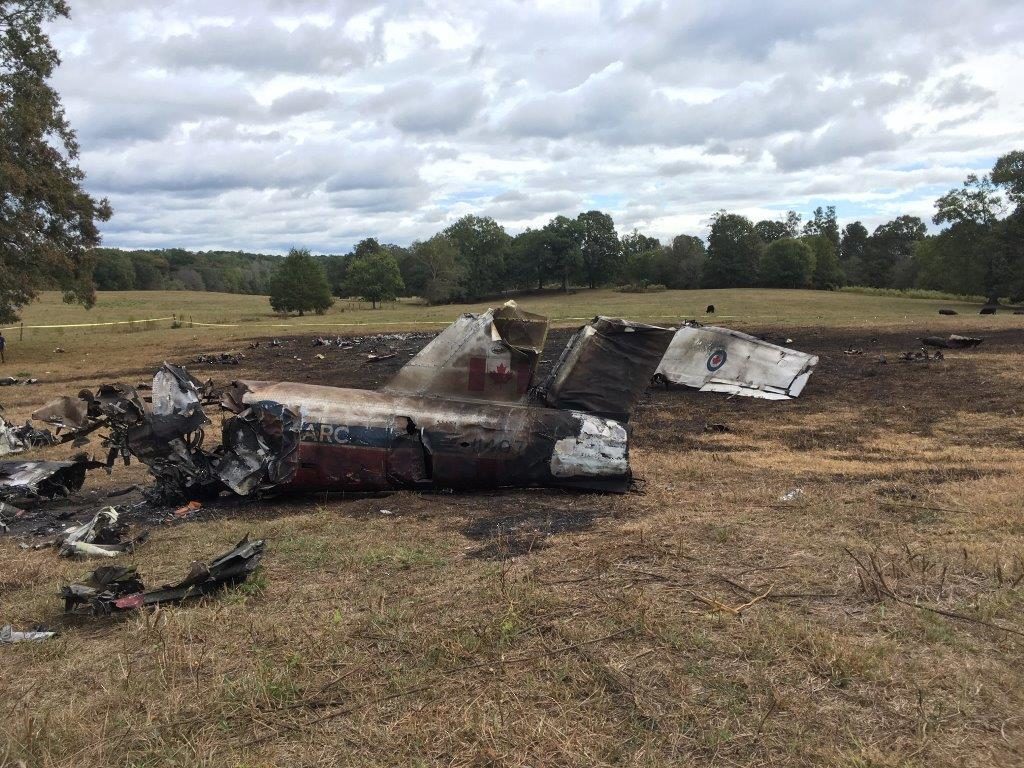Estimated reading time 2 minutes, 58 seconds.
The Department of National Defence’s Airworthiness Investigative Authority has issued the final report in relation to a crash involving a Snowbirds CT-114 Tutor aircraft in Hampton, Ga., on Oct. 13, 2019.

The accident involved a CT-114 from the Canadian Armed Forces Air Demonstration Team (Snowbirds) that was enroute to the Atlanta Air Show being held at the Atlanta Motor Speedway in Hampton.
Following a routine check while inverted, the pilot then rolled level and applied full power to rejoin the formation. Shortly after, the pilot experienced a loss of thrust. Losing altitude and unable to recover engine power, the pilot elected to eject as the aircraft was too low to attempt a safe recovery to an airport. The pilot successfully ejected from the aircraft; however, he reported anomalies with the ejection sequence and the parachute opening.
The aircraft was destroyed upon impact and the pilot received minor injuries as a result of the ejection sequence.
The investigation determined that the most probable cause of the accident was a fuel delivery system failure within the engine. The precise location of the failure could not be identified with confidence, though given the evidence of pre-existing damage to the engine oil cooler fuel inlet port, the analysis suggests a potential fuel leak at that location.
The investigation also determined that the mostly likely cause of the parachute malfunction was the result of one or more parachute pack retaining cones having been released prior to the activation of the MK10B Automatic Opening Device. Entanglement of the suspension lines with parts of the ejection seat immediately followed ultimately disrupting the proper opening of the parachute canopy. Inspection of all related Tutor Aviation Life Support Equipment was subsequently carried out to ensure fleet airworthiness.
The investigation recommends that an inspection be carried out on CT-114 engines to identify any damaged oil coolers that may be at risk of leaking at the fuel ports. In addition, the investigation recommends establishing a controlled verification process on the maintenance activities involving fuel transfer tubes in an effort to identify the cause of the damage to the oil cooler ports. Further recommended measures include improving the fitment of the fuel tubes and consolidating and improving on the maintenance instructions that involve the oil cooler and its components.









Surprised there is no mention of a better ejection seat system..could of saved a life a month ago..
Time to park the old Tutor jets ..
It would be appropriate to write that the aircraft belonged to the RCAF and not the Canadian Armed Forces as indicated in the article.
Technically, the RCAF is a branch of the Canadian Armed Forces. Hence why, the decal on the side of all Aircraft in the RCAF says Canadian Armed Forces – Forces armées Canadiennes with a Canadian flag.
The RCAF roundel is usually seen on the tail of the A/C.
So, the article isn’t wrong using the term Canadian armed Forces, you’re also not wrong that the aircraft belong to the RCAF. All RCAF assets belong to the Canadian armed forces.
Don’t wish to nit-pick, but FYI, all RCAF aircraft are currently in the process of being, or already are painted in RCAF/ARC titles. The RCAF roundel is NEVER seen on an aircraft’s tail. The “fin flash” is always the Canadian flag.